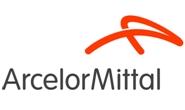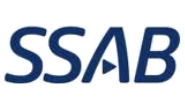Steel Mills

ArcelorMittal Reports $1.1 Billion Profit for Q2
Written by Sandy Williams
July 31, 2016
ArcelorMittal posted net income of $1.1 billion second quarter 2016 compared to a net loss of $400 million in first quarter. Second quarter EBITDA nearly doubled from first quarter due to higher steel selling prices and volumes.
Crude steel production was 13.1 million tonnes with shipments of 22.1 million tonnes. Sales increased to $14.7 billion from $13.3 billion the prior quarter.
Key developments in second quarter included the ratification of the contract with United Steelworkers at ArcelorMittal USA that resulted in a one-time gain of $832 million on employee health benefits. The company is progressing with optimization plans at Indiana Harbor that involves the idling of less efficient operations and investments in others. Two new automotive steel products will be launched in 2017, Usibor® 2000 and Ductibor® 1000.
ArcelorMittal Dofasco is still on schedule to complete conversion of the #4 galvanize line to a dual pot line in 2016.
AM/NS Calvert’s phase slab yard expansion (Bay 5) is expected to be completed in Q1 2017. Capacity utilization increased to 85 percent during second quarter and the hot mill is running well. The mill is expected to be operating at 90 percent of capacity by the end of the year. So far, 218 of 237 automotive qualifications have been approved and 25 or more are targeted for 2016. ArcelorMittal anticipates sixty percent of Calvert’s volume will be supplied to automotive customers when the facility reaches peak capacity. Approximately 2 million tonnes of Calvert’s substrate comes from CSA and 0.5 million from U.S. operations and the remainder from ArcelorMittal slab businesses in Brazil and Mexico.
In outlook remarks, ArcelorMittal said, “Despite the steel spread recovery losing momentum in recent weeks, the impact of lagged prices will be an important support for operating results as we move into a period of seasonally slower steel demand. Improved market conditions are likely to consume working capital in 2016 (current estimate of ~$0.5 billion); the Company nevertheless expects cash flows from operating activities to exceed capex in 2016.”
ArcelorMittal lowered its forecast for U.S. flat and long apparent steel consumption to 2 to 3 percent due to tightening of supply resulting in lower inventories and longer lead times.
During the earnings conference call the spread in steel prices between Europe and the U.S. was noted. Aditya Mittal, CFO and CEO of Europe, said the price differential provides an attractive opportunity.
“The U.S. is moving very aggressively on any surge of imports or any new countries which would bring in a lot of steel and we are aware of that plus we have a larger operations in the U.S. so we put all of that into consideration before deciding on what the appropriate export strategy is for European facilities.”
Chairman and CEO Lakshmi Mittal said that the operating environment for steel has improved in the past three to four months.
“However, China remains a threat, production is higher than domestic demand and exports are elevated,” said Mittal. “We must continue to encourage China to deliver on these plans to deal with over capacity. In the meantime, we’ll continue to work with the governments in our various operating jurisdictions to ensure that appropriate protection measures are in place to ensure a fair and level playing field.”
“This quarter, there have been positive developments on trade measures both in the U.S. and Europe. Clearly, pricing has recovered sharply during the second quarter. In recent peaks, we have seen steel spreads moderate marginally. But if real demand continuous to be positive and impose contained, then steels spread should main supported by good levels of inventory and extended order lead times.”
Aditya Mittal commented on imports and the surge of import licenses in June: “In terms of import pressures, I think look in terms of the U.S. marketplace our view is still constructive. Supply demand balance is quite constructive, inventory levels remain low and so far we are seeing some stability in pricing with some downside risk. To your specific question of import licenses, we have to recognize that physical imports are lower than license data that’s what we saw in June there could be some spillover into July.”
(NOTE: this article was adjusted on August 1, 2016 to add the amount ($832 million) for the one time gain from employee health benefits following ratification of the USW contract.)

Sandy Williams
Read more from Sandy WilliamsLatest in Steel Mills

Goncalves says Cliffs still has interest in USS buy
Cleveland-Cliffs Inc. would still be interested in acquiring some or all of U.S. Steel’s assets, if the proposed deal by Nippon Steel stumbles, according to an article in Bloomberg.

Algoma to conclude planned plate mill outage at month’s end
Algoma Steel Inc. expects to wrap up a previously announced outage on its plate mill by the end of this month, a company spokeswoman said. The outage is part of the Canadian flat-rolled steelmaker’s $130 million CAD ($95 million USD) modernization project. It began in mid-April.

SDI execs detail April outage at Sinton, address ‘robust’ HR-CR spread
Steel Dynamics Inc. (SDI) executives said the company's Sinton, Texas, sheet mill should be able to increase melt capacity after an outage earlier this month. Sinton should see "additional improvements in production" after taking "several maintenance days in April," Barry Schneider, SDI president and COO, said in a Q1 earnings conference call on Wednesday.

SSAB Americas Q1 results hit by lower plate prices, demand
Lower demand and prices for steel plate impacted SSAB Americas’ results in the first quarter, Swedish parent company SSAB said in its Q1'24 interim report.

Cliffs working on a transforming solution for Weirton mill
Cleveland-Cliffs is working on a solution for its recently idled mill in Weirton, W.Va., that will address pent-up demand for transformers, increase the need for its electrical steel, and get its workforce back to work.
